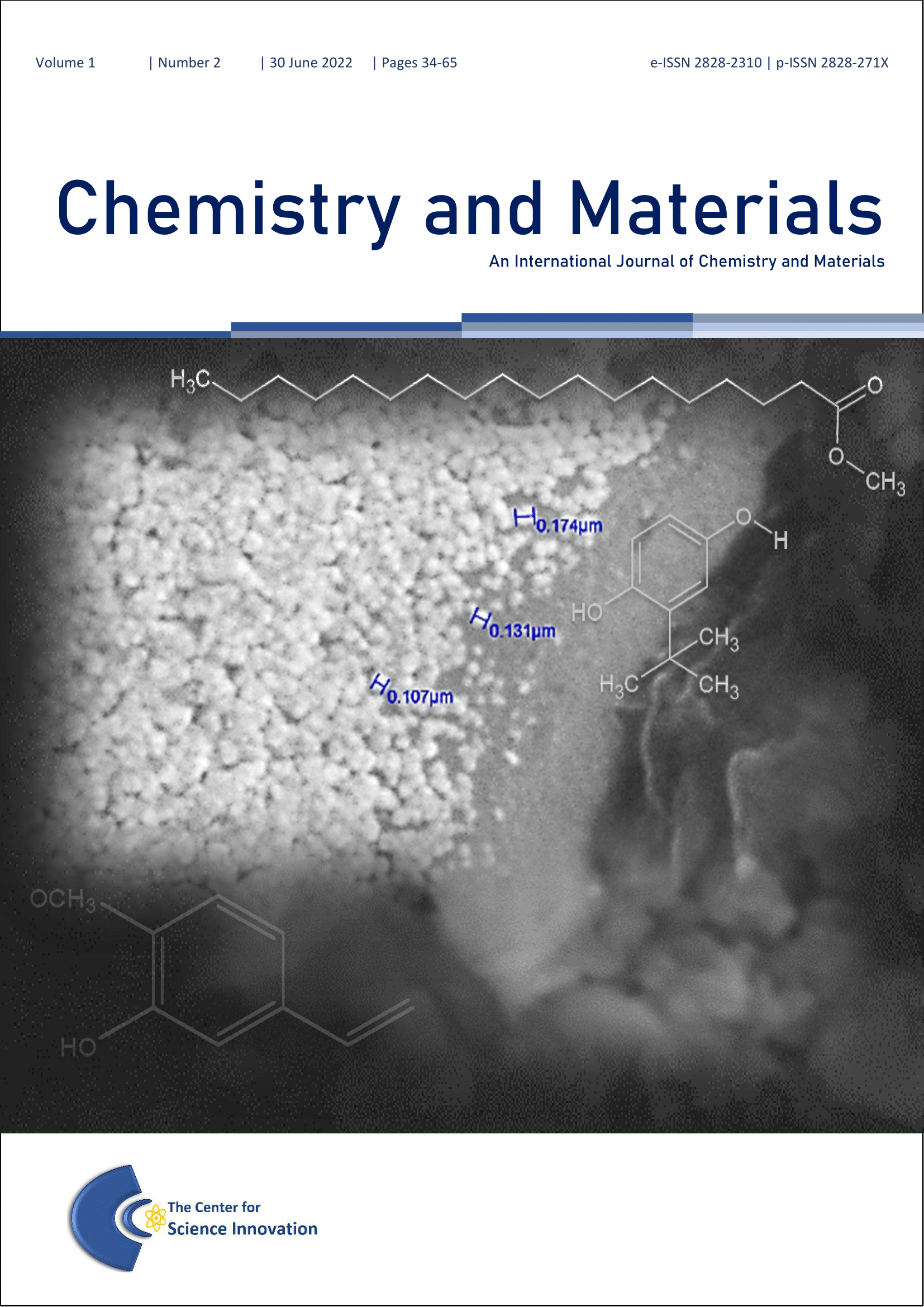The Effect of Electrodeposition Current and Electrolyte Composition on Electrodeposition of Fe-Ni Alloys
DOI:
https://doi.org/10.56425/cma.v1i2.27Keywords:
alloy, Fe-Ni, electrodepositionAbstract
This research was conducted to determine the effect of solution variations, electrical current, thickness, weight, metal composition, and the characteristics of the Fe-Ni alloy synthesized using the electrodeposition method. The instruments used in this study were atomic absorption spectroscopy (AAS) to determine the metal composition in the deposit, X-ray diffraction to determine the diffraction patterns, and scanning electron microscopy (SEM) to observe morphology and energy dispersive X-ray spectroscopy for elemental analysis. The SEM micrographs obtained showed that morphology of the Fe-Ni alloy was in the form of refined grains. The percentage of Fe in the deposit decreases with the increase in the used current. The AAS data also showed that a high Ni composition in solution will affect the atomic percent of each metal in the deposit. The formation of the alloy was confirmed by diffraction peaks at 2θ of 44°, 53°, and 76° that associated with reflection planes of the face centered cubic structure of Fe-Ni with the crystallite size range from 5 nm to 35 nm.
Downloads
Published
Issue
Section
License
Copyright (c) 2022 Ghina Imani Rofi, Maria Paristiowati

This work is licensed under a Creative Commons Attribution 4.0 International License.



